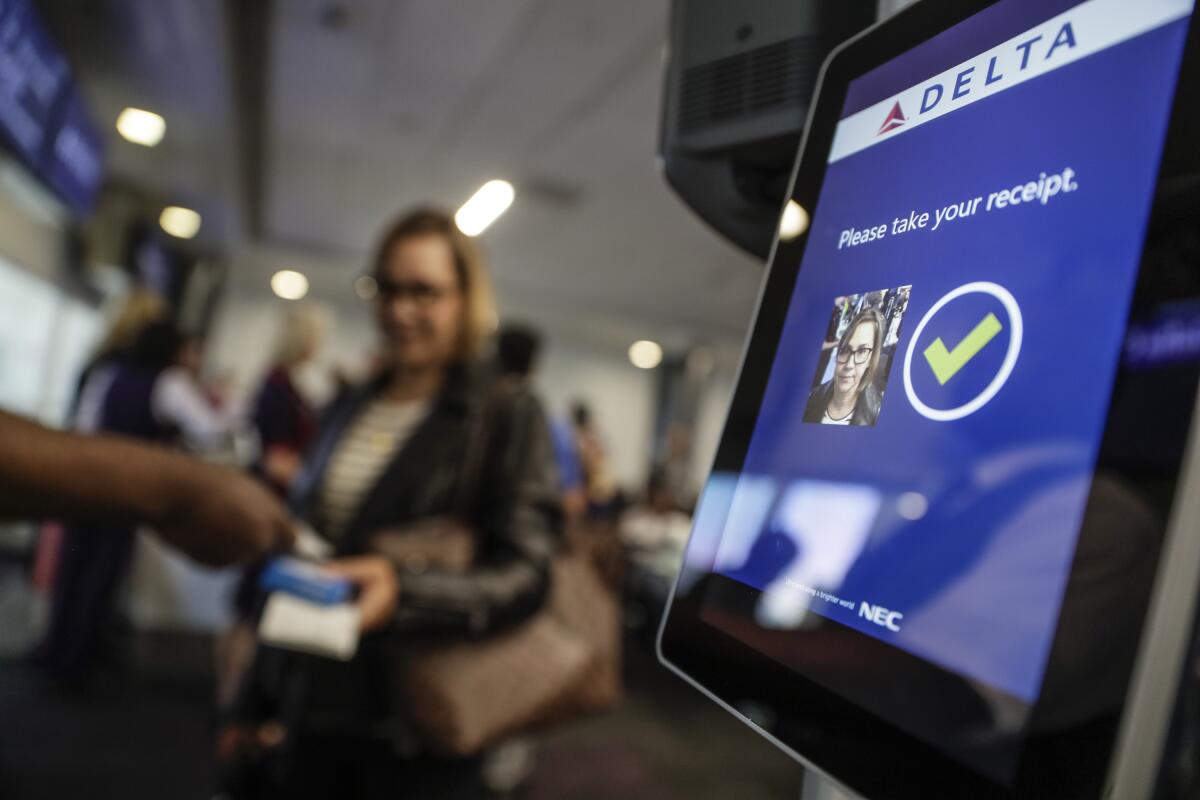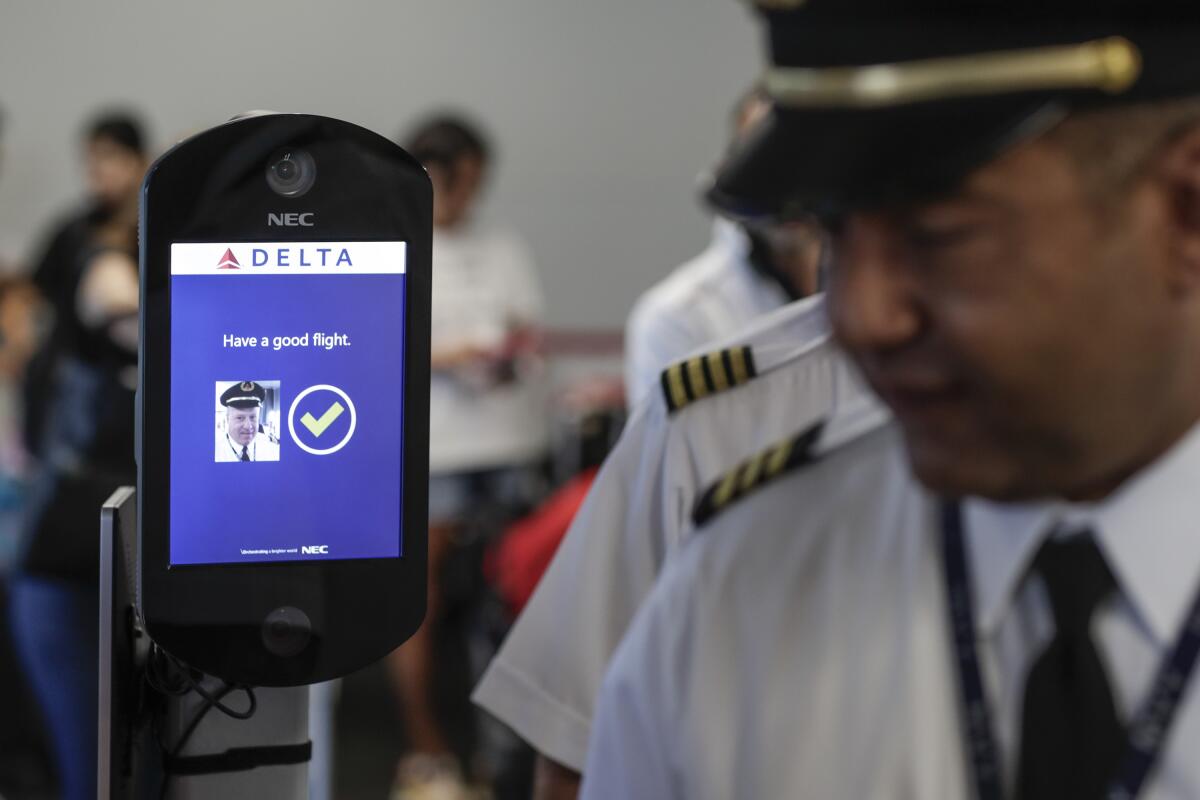Delta Air Lines will use facial recognition cameras at LAX boarding gates

- Share via
Delta Air Lines will begin using facial recognition technology at Los Angeles International Airport on Friday, installing cameras to identify passengers at one boarding gate, with plans to add more.
The move by the Atlanta-based carrier comes as a coalition of progressive groups, including Greenpeace, MoveOn and the Electronic Privacy Information Center, called for a federal ban on the use of facial recognition technology by law enforcement agencies.
Critics of the technology say that the images collected by the cameras can be stored and used to violate the privacy of innocent people, and that the technology is more likely to misidentify women and people of color than white men.
Fight for the Future, a nonprofit group opposed to online censorship and a member of the coalition, said the group is opposed to the use of facial recognition for airlines.

“There is no real oversight for how a private corporation can use our biometric information once they’ve collected it,” said Evan Greer, deputy director of Fight for the Future. “We’ve already seen high-profile data breaches where airport facial recognition databases were hacked and exposed.”
Over the last 12 months, LAX has been a testing ground for facial recognition technology by various airlines and federal agencies.
U.S. Customs and Border Protection began testing facial recognition technology in a 30-day trial last summer, calling the trial period a success.
“Although CBP has a very thorough and robust biographic vetting system, biometrics provides additional assurance and confirmation of identity,” the agency said in a statement.
American Airlines indefinitely extended a 90-day test period for use of facial recognition technology that was first installed at LAX last winter. The Transportation Security Administration launched a three-week test last year of facial recognition cameras, but a TSA representative could not be reached to describe the results of the test.
LAX kicked off a pilot program in January of facial recognition technology at three boarding gates used by several international carriers at Tom Bradley International Terminal. The testing is ongoing, airport officials said.
Delta’s deployment Friday of facial recognition technology in Terminal 2 won’t be a test. The airline is permanently installing the cameras, planning an expansion to 13 of its 21 boarding gates.
The cameras use facial recognition technology to match the faces of departing travelers with images and names already collected by Customs and Border Patrol and other government agencies. If the name that corresponds to the image captured by the cameras is on the flight manifest, the passenger is allowed to board.
The technology can save an average of nine minutes when boarding a wide-body aircraft, or two seconds per customer when compared with traditional boarding, according to Delta.
The carrier defended the use of the technology, saying the airline does not store the images taken at the checkpoint and gives passengers the option to instead have a gate agent visually confirm the passengers’ identity.
“Maintaining the privacy and security of customer information is a responsibility Delta takes very seriously,” Delta spokeswoman Liz Savadelis said.
Delta officials say that when Customs and Border Protection has tested facial recognition technology at other airports, fewer than 2% of passengers have opted out of using it.
An audit released last year by the Department of Homeland Security’s Office of Inspector General found that pilot programs to test the technology at nine airports had a combined match rate of only 85% — below the agency’s goal of a 97% to 100% match rate.
The audit also blamed poor quality of digital images for difficulty matching travelers under the age of 29 and over the age of 70. In addition, the system had more difficulty matching certain nationalities — specifically U.S. citizens, Mexicans and Canadians — because the government’s “digital gallery” had fewer photos of those nationalities than of other foreign travelers, the audit said.
Delta, which has a reputation in the airline industry for its use of cutting-edge technology, announced plans in June to install facial recognition cameras at 49 boarding gates at Hartsfield-Jackson Atlanta International Airport, Minneapolis−St. Paul International Airport and Salt Lake City International Airport.
American Airlines said earlier this week that it was adding facial recognition cameras to confirm the identity of international travelers at three boarding gates at Dallas Fort Worth International Airport.
More to Read
Inside the business of entertainment
The Wide Shot brings you news, analysis and insights on everything from streaming wars to production — and what it all means for the future.
You may occasionally receive promotional content from the Los Angeles Times.











